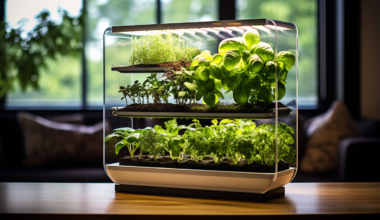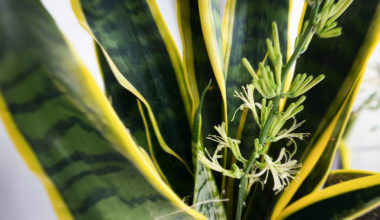Cacti, with their unique shapes, impressive spines, and ability to thrive in arid and desert environments, have captivated the hearts of plant enthusiasts worldwide.
These hardy succulents make fantastic additions to indoor and outdoor gardens, providing a touch of desert beauty. However, successful cacti care requires specialized knowledge and techniques.
In this ultimate guide, we will delve into the world of cacti care, covering everything from selecting the right species to providing optimal growing conditions, propagation methods, common issues, and much more.
Whether you’re a beginner or a seasoned cacti enthusiast, this comprehensive handbook will equip you with the knowledge and skills to nurture healthy and thriving cacti.
- Understanding Cacti
- Choosing the Right Cactus Species
- Providing the Ideal Growing Conditions
- Watering Techniques and Frequency
- Fertilising Cacti
- Handling and Pruning Cacti
- Dealing with Common Issues
- Propagation Techniques
- Winter Care for Cacti
- Enjoying the Beauty of Blooming Cacti
- Displaying and Arranging Cacti
- Exploring Cacti Diversity
Understanding Cacti
To care for cacti effectively, it’s essential to understand their natural habitat, unique characteristics, and the various cactus species available. Here’s what you need to know:
- Cacti are members of the Cactaceae family, encompassing a wide range of species with diverse growth habits and forms.
- They have adapted to survive in arid regions, developing specialized features such as thick stems, waxy coatings, and spines to store water and protect themselves from herbivores.
- Cacti come in various shapes, including columnar, globular, cylindrical, and branching forms, each with its own care requirements and aesthetic appeal.
Choosing the Right Cactus Species
Selecting the right cactus species is crucial for successful care. Consider the following factors when choosing cacti for your collection:
- Growth habit and size: Determine the growth habit that suits your space and aesthetic preferences. Some cacti grow tall and columnar, while others remain compact and globular.
- Light requirements: Different cacti have varying light preferences, ranging from full sun to partial shade. Consider the lighting conditions in your home or garden and choose accordingly.
- Watering needs: Cacti have different watering requirements, with some species tolerating drier conditions and others needing more frequent watering. Align the watering needs of the cacti with your routine and environment.
Providing the Ideal Growing Conditions
Creating the right environment is crucial for the health and vitality of your cacti. Consider the following factors when setting up their growing conditions:
- Light: Most cacti thrive in bright light conditions. Place them near a south or west-facing window to provide ample sunlight. Rotate the pots occasionally to ensure even growth.
- Temperature: Cacti generally prefer warm temperatures, ideally between 70-90°F (21-32°C) during the growing season. Protect them from extreme cold or heat.
- Soil: Use well-draining soil specifically formulated for cacti or create a mix with coarse sand, perlite, and organic matter. Avoid compacting the soil, as it can lead to root rot.
- Watering: Water your cacti thoroughly but infrequently. Allow the soil to dry out between waterings to prevent root rot. Adjust the watering frequency based on the species, climate, and time of year.
Watering Techniques and Frequency
Watering cacti correctly is crucial for their well-being. Follow these guidelines for proper watering:
- Water deeply until the excess water drains out from the bottom of the pot. Discard any excess water to prevent waterlogging.
- Allow the soil to dry out completely between waterings. Stick your finger an inch into the soil to check for moisture.
- Adjust the watering frequency based on the season. During the growing season (spring and summer), cacti may require more frequent watering. Reduce watering during the dormant period (fall and winter).
- Avoid overhead watering as it can lead to rot and fungal diseases. Instead, water at the base of the plant to keep the spines and body dry.
Fertilising Cacti
Cacti have unique nutritional requirements. Here’s how to fertilise them effectively:
- Use a balanced, water-soluble fertiliser specifically formulated for cacti and succulents.
- Dilute the fertiliser to half the recommended strength and apply during the active growing season (spring and summer).
- Avoid fertilising during the dormant period as it can stimulate growth and make the plants more susceptible to cold damage.
Handling and Pruning Cacti
Cacti have spines that require careful handling. Here are some tips for safe handling and pruning:
- Use thick gloves or tongs when handling spiny cacti to protect your hands.
- If pruning is necessary, use sharp, sterilized pruning tools to make clean cuts. Allow the cuts to callus before planting or propagating the cuttings.
- Remove dead or damaged parts of the cactus to maintain its health and appearance.
Dealing with Common Issues
Cacti are generally hardy plants, but they can encounter certain issues. Here are some common problems and their solutions:
- Overwatering: If your cactus shows signs of yellowing or softening, it may be a sign of overwatering. Adjust your watering frequency and ensure the soil is well-draining.
- Pest infestation: Common pests that affect cacti include mealybugs, scale insects, and spider mites. Use organic pest control methods or insecticidal soaps to treat infestations.
- Disease prevention: Ensure good air circulation, avoid excessive humidity, and maintain proper watering practices to prevent fungal diseases.
Propagation Techniques
Propagating cacti is a rewarding way to expand your collection. Here are some common propagation methods:
- Offsets or pups: Many cacti produce offsets or pups that can be separated and replanted.
- Stem cuttings: Take stem cuttings and allow them to callus before planting them in a well-draining soil mix.
- Seeds: Collect and sow seeds following the specific germination requirements of each cactus species.
Winter Care for Cacti
Cacti have different needs during the winter months when they go through a period of dormancy. Consider the following tips for winter care:
- Reduce watering frequency and allow the soil to dry out more thoroughly between waterings.
- Place your cacti in a cooler location with reduced light intensity to simulate their natural winter conditions.
- Protect them from drafts and sudden temperature changes.
- Be cautious of overwatering, as the reduced light and lower temperatures slow down their growth.
Enjoying the Beauty of Blooming Cacti
Many cacti produce stunning flowers that add beauty to your collection. Here’s how to encourage blooming:
- Provide ample sunlight during the growing season, as it is essential for flower production.
- Be patient, as cacti often take several years to reach maturity and produce flowers.
- Maintain optimal growing conditions, including proper watering, fertilizing, and temperature control.
- Some cacti require a period of cool temperatures or reduced watering to initiate flowering.
Displaying and Arranging Cacti
Cacti make excellent display plants, both indoors and outdoors. Consider the following tips for showcasing and arranging your cacti:
- Group cacti with similar care requirements together to ensure they receive the right conditions.
- Create visually appealing arrangements by varying the sizes, shapes, and textures of the cacti.
- Use decorative containers or terracotta pots that complement the aesthetics of your cacti collection.
- Incorporate other desert-themed elements such as rocks, sand, or driftwood to enhance the overall display.
Exploring Cacti Diversity
Cacti offer a diverse range of species, each with its own unique characteristics and care requirements. Take the opportunity to explore different cactus varieties and expand your collection. Here are a few popular cactus genera to consider:
- Opuntia: Known for their flat, paddle-like stems called pads, Opuntia cacti are often referred to as “prickly pears” and produce colorful flowers and edible fruits.
- Echinocactus: Commonly known as “barrel cacti,” these globular cacti feature prominent ribs and are prized for their impressive size and striking architectural form.
- Mammillaria: With their clustered, cylindrical stems covered in small spines, Mammillaria cacti are popular for their diverse growth habits and colorful blooms.
- Rebutia: Rebutia cacti are characterized by their small, globular bodies and vibrant flowers, making them excellent choices for indoor cultivation and small spaces.
Caring for cacti is an exciting and rewarding endeavor. By understanding their natural habitat, choosing the right species, providing optimal growing conditions, and practicing proper care techniques, you can cultivate a thriving collection of cacti.
Remember to tailor your care approach to each species’ specific needs, adjust watering and fertilizing routines according to the seasons, handle and prune with care, and address common issues promptly.
With this ultimate guide as your companion, you’ll be well-equipped to enjoy the beauty and resilience of cacti while creating a captivating desert oasis in your home or garden.





